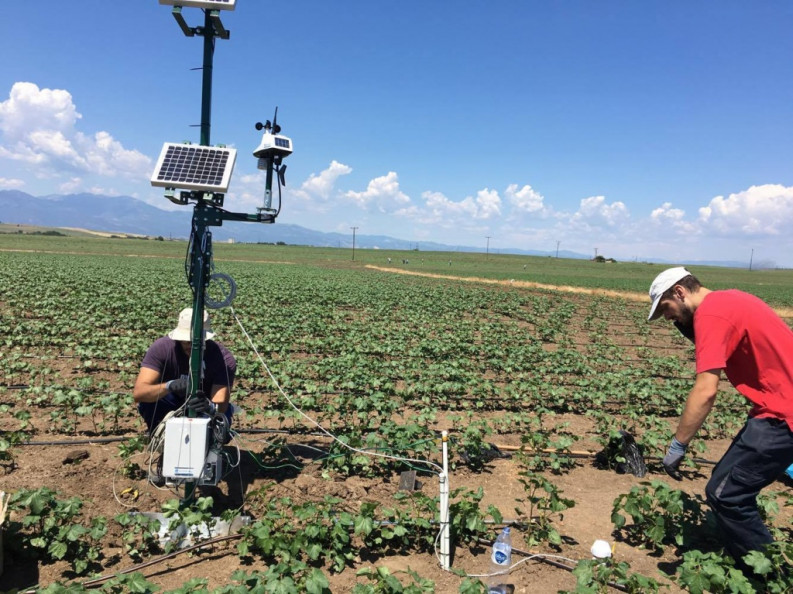Sensor technology continues to grow in value on the farm. Part of that expansion is the ability for developers of these tools to use the same sensor, but enhance the supporting software platform to gain greater knowledge. And adding capabilities to sensors also adds value.
In the life of the internet of things, CropX is a longtime player, having first entered the U.S. market four years ago. The company recently announced a significant upgrade to its services and its sensors.
The company is adding electrical conductivity (EC) measurement to its latest sensor, long known as a tool for managing irrigation for better water use, and is combining that information with water management in an enhanced software platform. The sensor is adding new optional communication capabilities to better serve the global market.
But why add soil management? “We’re expanding the market,” says Tomer Tzach, CropX CEO. “We started with irrigation and moisture sensing, but we’re adding new sensing capabilities to optimize fertilizer application and use.”
This pushes CropX beyond its initial core business of irrigation, and Tzach says that it expands the market for the firm. He notes that while much of the West has irrigation, there are more dryland crops that can benefit from the new technology.
Tzach explains that by adding the EC sensor to the device —which looks like a mushroom with a big screw below — the company is expanding the ability to help farmers better manage fertilizer. EC readings can indicate the amount of water and water-soluble nutrients available for plant uptake in the soil. As EC rises, soil microorganism activity can decline, which impacts key soil processes including respiration, residue decomposition, nitrification and denitrification.
More yield, less water
The CropX system is a do-it-yourself sensor a farmer can install in minutes. Multiple sensors on the farm can then send information to a data cloud, where farmers can see what’s happening on their farms. CropX points to information from work done on Beck’s Practical Farm Research that showed CropX-based irrigation produced 16% to 24% more yield on the same or less water. The system lets farmers know when specific field areas need watering.
Add in soil mapping capability with nutrient use efficiency, and the sensor system will offer farmers the ability to better manage a wide range of nutrients. The new software that comes with this upgrade includes a field-drawing capability, which means the platform knows important information about a newly installed sensor and the soil it is in, with the assistance of USDA data.
Tzach explained that USDA soil data are a start, but that some of those data are more than 40 years old. “The sensor can also build a farm soil profile based on information it gathers from irrigation or rain events,” he explains. “Heavier soil drains slower, sandier soils drain faster — that’s information the sensor can collect and the software can use to map soil performance on the farm.”

GOING DEEPER: The new CropX Deep Sensor (far right) will measure moisture, temperature and now electrical conductivity as deep as 36 inches, and report the information to farmers. It’s the latest new product from the company.
Updating the sensor
The idea of a connected network of sensors at work on the farm can make a difference in how you use a range of inputs. But that sensor network needs to be able to “report in” and share information more easily. With this new update, CropX is offering an interesting option — satellite connectivity.
“We are not putting a satellite transponder in every sensor; this will be an option for a more expensive version,” Tzach says. “This will allow people in areas without cell service to get access to their field information.”
This is part of the CropX move to enter more global markets where cellular service is less reliable, but improving input management is of growing importance. On the cellular side, the CropX system is already tuned to self-select the cellular service with the most powerful signal. And the sensor comes with its own data plan.
“We don’t make the farmer seek out a data plan. That’s part of our program,” Tzach says.
There’s also a new sensor, the CropX Deep Sensor, which can help get information at three soil depths when installed. In addition to the 8-inch and 18-inch measurements standard on all sensors, the Deep Sensor digs deeper to give farmers information about moisture, temperature and EC measurements at 36 inches.
Soil sensors are growing in their capabilities to capture key information on your farm for improved management of water and nutrients. In an age with tighter margins, improving input management can offer a big payoff.
“Running a pivot connected to a well 200 feet deep costs a farmer about $500 every time it makes a circle,” Tzach says. “If our system can help a farmer reduce those passes, there’s a definite economic benefit.”
Learn more about the new CropX Deep Sensor, EC measurement and the upgraded software by visiting cropx.com.
